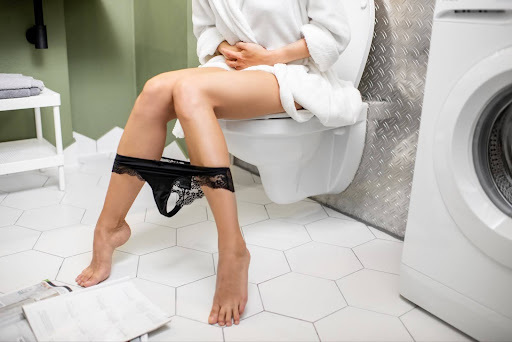Urinary incontinence (the loss of bladder control) is a common and often embarrassing problem. The severity ranges from occasionally leaking urine when you cough or sneeze to having an urge to urinate that's so sudden and strong you don't get to a toilet in time. While it can happen to anyone, urinary incontinence is more common in older people, especially women. Vitality Plus Urology can diagnose and treat urinary incontinence, offering various treatment options for those affected.
CAUSES OF URINARY INCONTINENCE
Urinary incontinence can be caused by a variety of factors, including:
1. Physical Changes
As one ages, muscles tend to weaken, including muscles in the bladder. After pregnancy and childbirth, your pelvic floor can be weakened due to stretching of muscles. In older women, menopause causes less estrogen to be produced. This hormone helps keep the bladder lining and urethra healthy. With less estrogen, these muscles weaken, causing less control over your bladder.
2. Medical Conditions
Urinary Tract Infections (UTIs): Infections can irritate your bladder, causing strong urges to urinate and sometimes incontinence.
Neurological Disorders: Multiple sclerosis, Parkinson's disease, a stroke, or a spinal injury can interfere with nerve signals involved in bladder control.
3. Lifestyle Factors
Consuming a lot of fluid, caffeine, or alcohol can exacerbate urinary incontinence. Tobacco use may also increase the risk of urinary incontinence.
TREATMENT OPTIONS
The treatment for urinary incontinence depends on the type of incontinence, its severity, and the underlying cause. A combination of treatments may be needed. Treatment options include:
1. Behavioral Techniques
Bladder Training: Delaying urination after you get the urge to go. You may start by trying to hold off for 10 minutes every time you feel an urge to urinate. The goal is to lengthen the time between trips to the toilet.
Double Voiding: Urinating, then waiting a few minutes and trying again to empty your bladder completely to avoid overflow incontinence.
Scheduled Toilet Trips: Timed urination every two to four hours rather than waiting for the need to go.
2. Physical Therapy
At Vitality Plus Urology, many times we recommend pelvic floor muscle exercises, also known as Kegel exercises. These involve tightening (contracting) the muscles that stop urinal flow. Results include strengthening of the muscles under the uterus, bladder, and bowel (large intestine).
3. Medications
Anticholinergics: These drugs can calm an overactive bladder and may be helpful for urge incontinence.
Topical Estrogen: Applying low-dose, topical estrogen in the form of a vaginal cream can help tone and rejuvenate tissues in the urethra and vaginal areas.
4. Devices or Interventions
Electrical Stimulation: Electrodes are temporarily inserted into the rectum or vagina to stimulate and strengthen pelvic floor muscles.
Medical Devices: Devices like urethral inserts and pessaries can help prevent leakage.
5. Surgery
Many times, certain surgical procedures are recommended. Some of these include:
-
Sling Procedures: A sling is made from your body's tissue, synthetic material, or mesh and is used to keep the urethra closed.
-
Bladder Neck Suspension: This procedure supports the urethra and bladder neck, an area of thickened muscle where the bladder connects to the urethra.
6. Lifestyle Changes
Fluid and Diet Management: Reducing or avoiding alcohol, caffeine, and acidic foods can help manage incontinence.
Weight Management: Being overweight can increase pressure on the bladder which may lead to incontinence.
VITALITY PLUS UROLOGY CAN HELP
Urinary incontinence is a treatable condition with a variety of strategies ranging from lifestyle changes to medical interventions. If you're experiencing symptoms of urinary incontinence, it's important to give Vitality Plus Urology a call today to determine the cause and appropriate treatment. Living with urinary incontinence doesn't have to be a part of aging or something you have to endure. There are many effective ways to manage or cure this issue, ensuring you can lead a comfortable and confident life.
